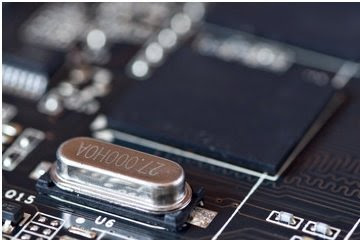HOW DO ELECTRONIC OSCILLATORS WORK?

Oscillators Oscillators are very important electronic circuits without which computers, clocks, quartz watches and radios would be rendered inoperable. Oscillators produce periodic, oscillating electronic signals mostly sine waves or square waves depending on the component values. This makes them very good sources of repetitive AC. For an oscillator to produce AC, it only requires a D.C supply. The signal generated by an oscillator, whether sine wave or square wave, has aconstant amplitude. Types of oscillators Oscillators are categorized based on the signal they produce. Sine wave oscillator – Produces sine waves Relaxation oscillator – Produces square and rectangular waves Sweep wave oscillator – Produces sawtooth waves Parts of an oscillator Oscillators are mostly made up of three basic parts; Amplifier – This is mostly a voltage amplifier and can be biased in class A, B or C Wave shaping network – This is made up of passive components like filter circuits

